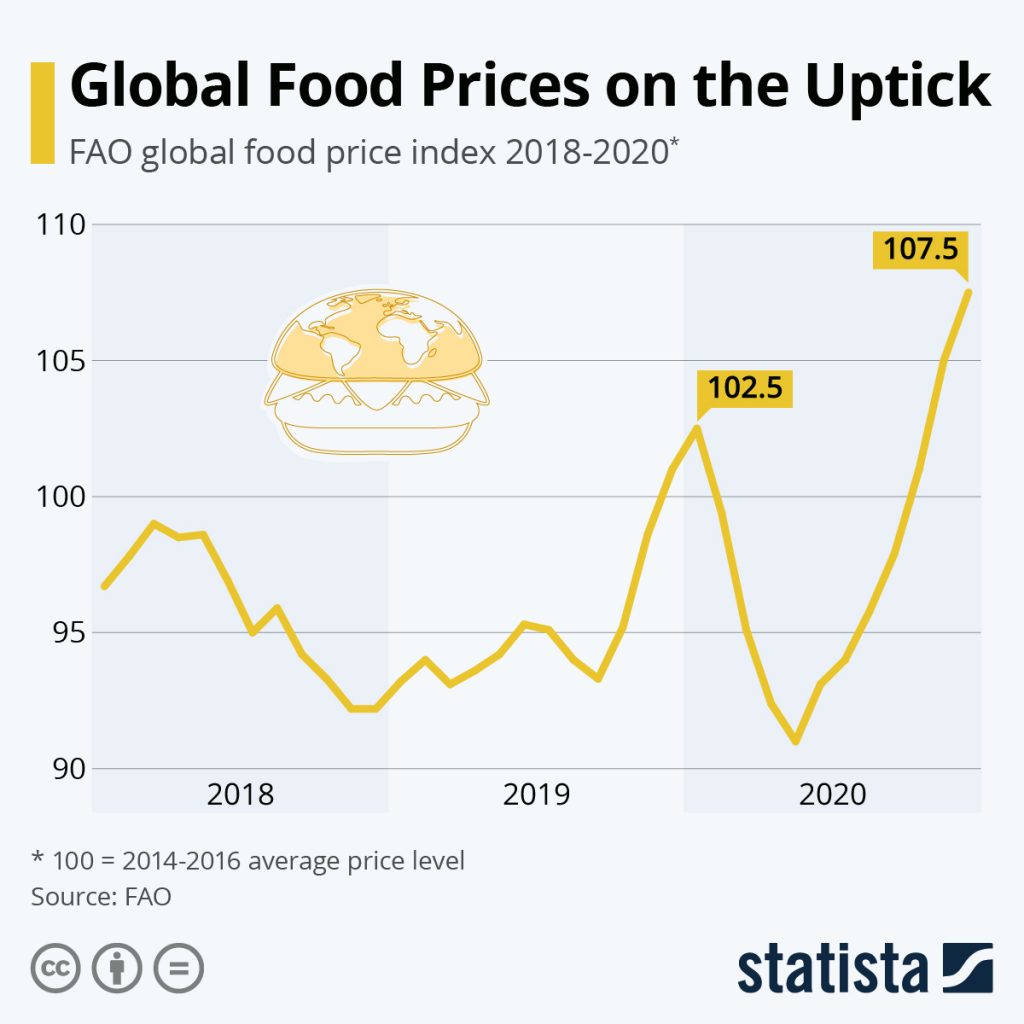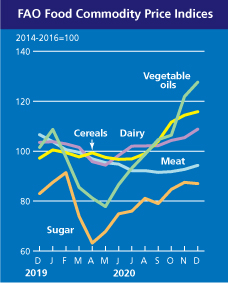Taps Coogan – January 9th, 2020
Enjoy The Sounding Line? Click here to subscribe for free.
Enjoy The Sounding Line? Click here to subscribe.
The last couple years have been a perfect storm for farmers and food producers around the world. Bad weather, outbreaks of African swine flu, fall armyworms, avian flu, and the US-China trade war all impacted farmers in major food producing regions around the world, resulting in food prices rising strongly by the end of 2019. Then came the Covid lockdowns which have disrupted supply chains, induced stockpiling, restricted migrant workers, and sent international shipping costs surging.
The net result, as the following chart from Statista shows, is a roughly 15% rise in global food prices since the start of 2019, according to data from the FAO Food Price Index.

The sub-components of food inflation are shown below. The two biggest drivers of food inflation over the last two years have been the staples: cereals and vegetables oils.

People debate the causes of the ‘Great Inflation’ of the 1970s. One contributor was the ‘Great Grain Robbery‘ of 1972. The Soviet Union’s disastrous ‘collectivist’ agricultural policies and bad weather contributed to a major failed harvest that year (and many others). Their purchase of imported grain from the West to replenish stockpiles sent global grain prices rocketing 30% higher and drained global stockpiles for years. That food inflation filtered into the broader economy at roughly the same time that the gold window was closed and the OPEC oil embargo was launched.
Would you like to be notified when we publish a new article on The Sounding Line? Click here to subscribe for free. Also, please consider sharing this article so that we can grow The Sounding Line!
Would you like to be notified when we publish a new article on The Sounding Line? Click here to subscribe for free.

